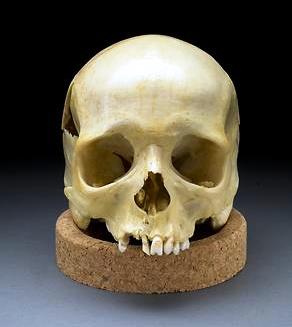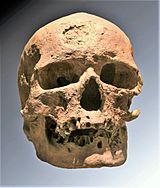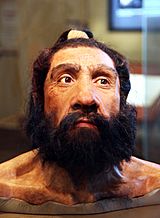Caucasian race facts for kids
The Caucasian race (also called Caucasoid or Europid) was a way of grouping people together based on their looks and where they came from. This idea was used in the past by scientists to describe people from parts of Europe, the Caucasus mountains, Asia Minor (like modern Turkey), North Africa, the Horn of Africa, Western Asia, Central Asia, and South Asia.

In the past, people who studied human biology used the term Caucasoid to describe groups with similar physical features, especially their skull shapes, rather than just their skin color. This meant that "Caucasoid" people were thought to have skin colors ranging from very light to dark brown. In the United States, the word Caucasian is often used to mean "white" or people with European family roots.
The idea of the Caucasian race first appeared in early ways of classifying human groups. It was one of three main "races" of humans, along with Mongoloid and Negroid. However, since the mid-1900s, scientists who study human biology have changed how they understand human diversity. They now focus more on genetics and different populations, rather than fixed "races." They see "race" more as a way societies group people based on looks, family history, and culture. Still, the terms "Caucasian" and "Caucasoid" are sometimes used in forensic anthropology (studying human remains) to help figure out where a person's ancestors might have come from, based on bone measurements.
Where the Idea Came From

Some of the first modern humans in Europe settled in places like Kostenki-Borshchevo in southwestern Russia. Scientists studied the DNA of a 37,000-year-old skeleton from this area, called Kostenki XIV. They found that these early settlers had genes similar to modern Europeans, but they had dark skin and dark eyes. They also had a few more Neanderthal genes than people in Europe and Asia today, because early humans and Neanderthals mixed about 45,000 years ago.
Scientists like William Howells (1997) believed that the Cro-Magnons, who were early humans in Europe, had skull features that looked "Caucasoid." He noted their straight faces and narrow noses.

More recent studies of Cro-Magnon fossils show that they had larger skulls than people today. Their skulls were long and low, with wide faces. These studies also suggest that some Cro-Magnons might have had brown skin. The very light skin color common in modern Northern Europeans is a newer development. It might have appeared in the European family line only about 6,000 to 12,000 years ago. This means Cro-Magnons likely had brown skin.
Images for kids
-
Drawing of the skull of a Georgian female by Johann Friedrich Blumenbach, used as an example for Caucasian racial features in his 1795 book De Generis Humani Varietate
See also
 In Spanish: Caucasoide para niños
In Spanish: Caucasoide para niños



